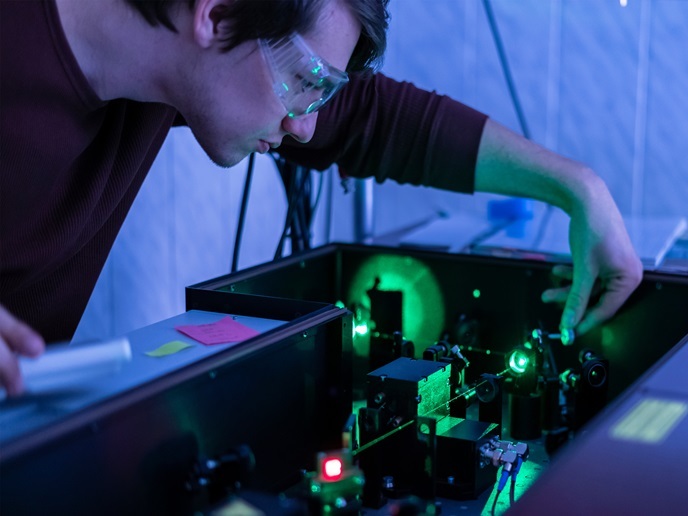Gamma-ray laser moves a step closer to reality
Building a gamma-ray laser has been a long-standing challenge for scientists. Just as an ordinary laser produces coherent rays of visible light, the much-discussed but not yet realised device produces coherent gamma rays, heralding a new generation of technology for research and industry. Until now, the production of coherent gamma photons has been hindered by fundamental mechanisms or technological limitations. Within the EU-funded project GAMMALAS (Towards gamma-ray lasers via super-radiance in a Bose-Einstein condensate of 135mCs isomers), a team of researchers conceived a proposal for producing coherent gamma photons that overcomes some of the most difficult problems. ‘Cool’ process for gamma-ray emission The new proposal of GAMMALAS for such a device is achievable with current technology. “The approach relies on laser cooling and magneto-optical trapping of caesium nuclei. Unlike other possible candidates, caesium is well suited for the proposed technique,” says Prof. Ferruccio Renzoni. “The idea was to produce a Bose-Einstein condensate of caesium isomers after cooling them down to 100 nano-Kelvin. At such extreme low temperatures, the atoms with excited nuclei start displaying purely quantum properties, especially spatial coherence,” further explains Prof. Renzoni. “In this state, excited nuclei emit their energy simultaneously, triggering a powerful burst of coherent gamma radiation.” The team’s approach overcomes three main problems: accumulating a large number of isomeric nuclei, narrowing down the laser beam’s emission line, and exceeding the theoretical limitations of photon power density. At the Accelerator Laboratory of the University of Jyväskylä in Finland, GAMMALAS has also built an experimental facility for laser cooling of radioactive caesium isotopes and for the production of coherent gamma radiation. There, a cyclotron particle accelerator produces unstable caesium nuclei. Caesium is then neutralised by adding an external electron though thin foil implantation. The newly developed laser system traps and cools caesium-135 and other desired isotopes down to around 150 micro-Kelvin. If all goes according to plan, the first test of caesium-135 trapping is scheduled for end of spring 2018. The ultimate light The possibility of producing coherent gamma photons will enable scientists to study several milestones in physics and science generally. Undoubtedly, the benefits of such a game-changer technology will be dramatic. “GAMMALAS outcomes will pave the way for further investigating ultra-cold nuclear matter, a merge between atomic and nuclear physics. In addition, coherent gamma rays will enable high-resolution gamma spectroscopy and will facilitate the tracing of dangerous, explosive or radioactive isotopes,” Prof. Renzoni concludes. Coherent gamma radiation could also open up several useful applications in everyday life. For example, it will enable ultra-precise imaging that will dramatically impact our approach to managing stereotactic radiation therapy to more effectively treat brain tumours. The energy sector can also benefit from on-demand coherent gamma photons. Storing and retrieving energy from isomeric nuclei has the potential to revolutionise battery technology, as energy density can increase by several orders of magnitude.
Keywords
GAMMALAS, caesium, gamma-ray laser, coherent gamma radiation, isomers, laser cooling, gamma spectroscopy, radiation therapy







